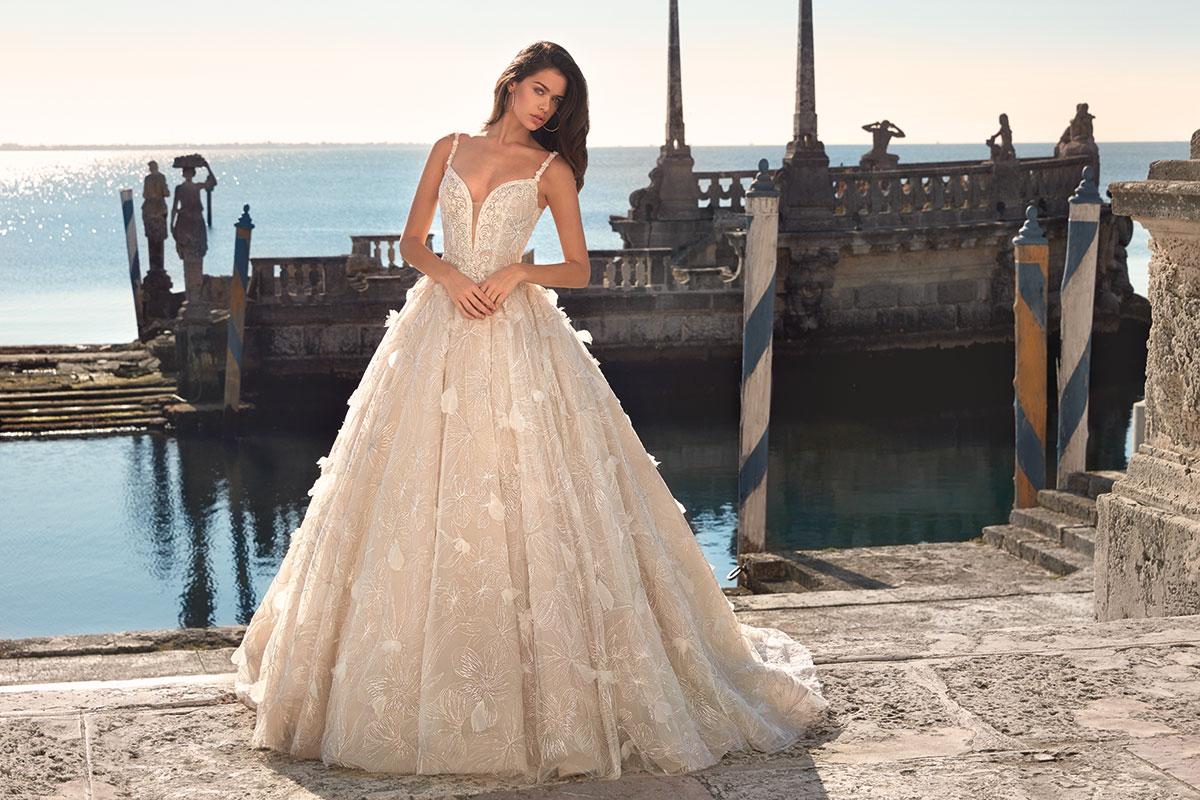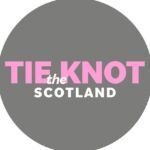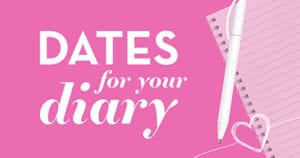Want to show off your best bits (and divert attention from certain other features)? Nicole Conner gets the lowdown on bridal dressing to suit your body shape
Can you remember the last time you wore a ballgown? It’s not something most of us do very often, let’s face it. No wonder we often feel clueless about what we like, never mind about what might actually suit us. But if wedding-dress shopping is on your To-Do list, you need to figure it out. We sat down for a chat with some of Scotland’s boutique owners, who shared a wealth of insights that’ll hopefully set you right.

Shape of you
Before you can think about ivory versus cream, or veils versus trains, you need to think about styles, and that means shape – your shape. Brides with pear-shaped bodies (narrower shoulders and bust, and a defined waist which slopes out to the hip) would be wise to choose styles that accentuate their middle. A-line, empire and ballgown dresses will flatter your waist, according to Kathleen Richmond Couture in Kilmarnock. “You could also try a wider strap or a cape sleeve, which will draw attention to your upper body,” Kathleen tells us. “If the bottom half of your body is an area you’d rather not emphasise, an A-line would be a good option as the skirt skims over the hips and thighs.”
These styles will also flatter rectangle-shaped bodies, where the bust, hip and waist measurements are very similar. Kathleen advises against drop-waists or clingy dresses: “They will just highlight any lack of curves.”
If you’re blessed with an hourglass figure (where bust and hip measurements are the same, with a slim waist in between), she suggests you give fit-and-flare, trumpet and mermaid styles a go.
For apple-shaped brides (broader shoulders, a fuller bust, less defined waist and slender bottom half), Kathleen recommends choosing styles that will help to ‘pinch’ the waist to emphasise all the right places.
“Having said all that, you will be the best judge of what you like and what you think suits you,” she points out. “Ultimately, your opinion is the only one that really matters when choosing the gown you’ll wear on your wedding day.” In other words, if your heart is set on a certain style, try it. It will do no harm to find out what it looks like on.


The long and short of it
What else matters beyond the silhouette? According to Kirsty Grant at Irvine’s Dream Brides, the next most important factor that can make or break your look is a gown’s neckline. The classic V-neck remains a firm fave, she says, and can impart a subtle sexiness.
A bateau neckline, such as the one on Meghan Markle’s wedding dress, suits just about everybody, says Kirsty: “The way it just reveals the collarbones makes it elegant and sophisticated.”
The sweetheart neckline, meanwhile, is a stalwart of bridal fashion for a feminine and romantic touch, while off-the-shoulder styles are extremely popular due to their ability to work with almost all body types.
If you can’t work out which neckline is right for you, listen to the experts, says Louise Kelly at Kudos Bridal Boutique in Edinburgh. “They will steer you in the right direction to pinpoint the shapes and styles that suit you best.”
With both shape and neckline, it’s all about proportion. “Pear-shaped brides will find that gowns with wider necklines balance out their top half with their hips,” says Megan Carberry at Kudos Bridal Boutique in Dunfermline. “Broad-shouldered brides, meanwhile, may feel less top-heavy in A-lines and ballgowns.”
Keira Stocks at Innate Bridals in Dundee insists that picking the right waist height is key. A V-neck dress and natural waist emphasise the bust and a smaller waist, she says, while the fall of heavy fabrics will show off an hourglass figure and cover the stomach.
Petite brides, according to Joyce Young Design Studios, should keep higher necklines in mind, but avoid long trains: “These create the illusion of shortening,” says Joyce. “For the same reason, keep dresses simple and elegant with no detail or fuss.” If you’re taller, she advises against long, straight styles. “Go for details like large bows or patterned lace. Full skirts with long trains also look amazing if you’re a good height.”
You’ll find that certain fabrics can be more flattering than others, depending on the style of dress, as Keira explains: “Silks and crepes tend to be used in more figure-hugging designs; and because they are naturally thinner, they are often less forgiving. But tulle, satin and laces are great for hiding anything you’d like to disguise.”
Joyce agrees, adding she wouldn’t recommend stiff materials for curvier figures: “I think a more fluid fabric like a crepe or mikado are best.” According to her, petite shapes suit chiffons and georgettes as they’re floaty and not overwhelming.


Flaunt it
If you can’t show off your best assets on your wedding day, when can you? For brides with great legs, according to Keira at Innate Bridals, there’s a current trend you might love: full skirts with thigh slits. Certain brands, such as Enzoani, are renowned for their bum-hugging and hourglass silhouettes, which are a dream for brides looking for something a bit sexy, adds Megan at Kudos.
Not all women feel comfortable in such dresses, of course. You’re definitely not alone if you have some body hang-ups. But that doesn’t mean you have to cover everything up: as Keira points out to brides who’re not so keen on their arms, sleeves are not always your friends. “By covering the top of your body and arms in fabric, you risk ending up looking blocky or wide,” she explains. Drop-sleeves (aka off-the-shoulder) help to break up a large area of exposed flesh and draw the eye down, so stick to these if this is a concern of yours.
Amy of Amy King Bridal and Beauty in Kirkcaldy finds labels like Rebecca Ingram and Sottero & Midgley very size-inclusive. “They know how to do structure while keeping it comfortable. If you are body-conscious, any areas you’re concerned about will disappear in a dress with structure,” she promises.
This is echoed by Megan, who finds Maggie Sottero gowns to be a huge hit. They also have customisation options, such as adding layers, straps or sleeves, so you can tailor the dress to get the look you want.
Essense of Australia, too, offers a wide range of sizes on its dresses. “The brand is what we like to call an ‘all-rounder’ designer,” Megan tells us. “With fitted styles, full skirts and floaty chiffons, it does everything so well. It also makes its dresses in sizes 6 to 36.”
Talking of sizes, Amy’s advice is not to get hung up on the numbers: bridal gowns are often made small, she says, and in any case, no one will know what size you end up wearing. It’s much better to feel comfortable, which will have a positive impact on your day.
Louise at Kudos agrees that the size on the label doesn’t matter. “As long as you feel incredible in your dream dress, your smile will say it all,” she believes.


Expert advice
Taking the first step on your dress-shopping journey can be overwhelming, but it’s easy to get onto the right path – if you follow the experts’ advice.
Keep your entourage small, says Megan. There won’t be so many conflicting opinions to consider, so you can focus on what you truly like. Wearing the correct underwear to your appointment will stand you in good stead too – you can’t go wrong with a pair of nude seam-free pants and a strapless bra. “We often find that dresses fit a lot better without a bra involved, though, so we’ll whip this away if you’re comfortable, to give you a better idea of necklines and back details,” she adds.
Amy suggests having a wee browse through a boutique’s social media and website to check what gowns and designers it has in before you visit. Booking too many appointments can be confusing, she points out, so doing this research should make “dress-hunting a fun, stress-free and enjoyable experience”.
And when you get there, keep an open mind. “It’s a new experience,” says Joyce, “so don’t bring too many preconceived ideas – and prepare to be surprised!”
Happy shopping!








